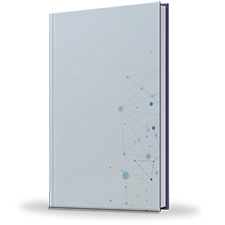Acute respiratory distress syndrome (ARDS) occurs when fluid builds up the elastic air sacs of lungs. These air sacs are known as alveoli. The build building up in the alveoli keeps the lungs from filling enough air for gaseous exchange; this means that less oxygen reaches the bloodstream. In addition, organs are deprived of oxygen that they need to function. ARDS is prevalent among people who have significant injuries or are already critically ill. Severe shortness of breath is the major symptom of ARDS, and it usually develops within a few hours after the infection or the precipitating injury. Other symptoms of ARDS include labored breathing, low blood pressure, confusion and extreme tiredness. Acute lung injury (ALI) is a condition characterized by hypoxia. The term ALI encompasses radiographic and clinical changes that affect the lungs with ARDH representing the more severe end of this continuum.
COVID-19 Impact Analysis
COVID-19 is an infectious disease that originated in Hubei province of the Wuhan city in China in late December. The highly contagious disease, caused by a virus, severe acute respiratory syndrome coronavirus 2 (SARS-CoV-2), is transmitted from human to human. Since the outbreak in December 2019, the disease has spread to almost 213 countries around the globe with the World Health Organization declaring it a public health emergency on March 11, 2020.
Pharmaceutical and biotech companies together with governments around the globe are working to address the COVID-19 outbreak, from supporting the development of vaccines to planning for medicine supply chain challenges. Currently, around 115 vaccine candidates and 155 molecules are in the R&D pipeline. Moreover, commonly used drugs such as hydroxychloroquine have witnessed a dramatic surge in demand for the management of COVID-19. Such high demand for these drugs has presented huge opportunities for manufacturers of COVID-19 management drugs, as many developed countries are facing a shortage of these drugs. Thus, the pharmaceutical and biotechnology industries are expected to witness significant growth in the future, owing to the demand for vaccines and treatment drugs for COVID-19. This, in turn, is expected to have a significant impact on the acute respiratory distress syndrome market.
Top Impacting Factors
Air pollution is one of the major causes of acute respiratory distress syndrome. The emission of harmful gases is often caused by vehicles. With increasing population using personal transportation, air pollution is contributing to rise the number of patients suffering from ARDS.
In addition, with lifestyle-related problems, developing healthcare infrastructure in advanced economies, and increasing awareness regarding respiratory diseases, the ARDS market is anticipated to receive growth impetus.
Several risk factors such as alcohol abuse, chemotherapy, obesity, and low blood-protein are contributing to rise in cases of ARDH. Furthermore, technological advancements are expected to positively support the acute respiratory distress syndrome market.
Availability of appropriate treatment and diagnosis for acute respiratory distress syndrome acts as one of the major driving factors of the global market.
However, lack of awareness regarding ARDS in developing nations and high cost associated with diagnostic devices for the condition may hinder the growth of the market during the forecast period.
Market Trends
The market targeted at stage two of acute respiratory distress syndrome known as the fibroproliferative stage is expected to grow by 2028. Stage II of acute respiratory distress syndrome, which is also known as the fibroproliferative stage, is expected to grow by 2028. This is attributed to the fact that small key players are planning to invest in research and development of new products.
Major key market players such as Smiths Medical, GE Healthcare, and Hamilton Medical AG are planning on acquisition and mergers with smaller players in the market in their long-term business strategies.
Diagnostic devices such as capnography devices, spirometers, pulse oximeters, and blood gas analyzers help in early diagnosis of acute respiratory distress so that proper therapy and treatment could be prescribed to patients, thus acting as a key driving force of the market.
Key Benefits of the Report
- This study presents the analytical depiction of the acute respiratory distress syndrome industry along with the current trends and future estimations to determine the imminent investment pockets.
- The report presents information related to key drivers, restraints, and opportunities along with a detailed analysis of the market share.
- The current market is quantitatively analyzed to highlight the market growth scenario.
- Porter’s five forces analysis illustrates the potency of buyers & suppliers in the market.
- The report provides a detailed acute respiratory distress syndrome market analysis based on competitive intensity and how the competition will take shape in the coming years.
Questions answered in the acute respiratory distress syndrome Report
- Who are the leading market players active in the acute respiratory distress syndrome market?
- How is each segment of the market expected to grow during the forecast ?
- What are the adoption trends for acute respiratory distress syndrome market in emerging economies and established economies across the world?
- What current trends will influence the market in the next few years?
- What are the driving factors, restraints, and opportunities in the market?
- What future projections would help in taking further strategic steps?
- What is "acute respiratory distress syndrome"?
- What is "acute respiratory distress syndrome" market prediction in the future?
- What are the current trends and predicted trends?
Acute Respiratory Distress Syndrome Market Report Highlights
| Aspects | Details |
| By Device Type |
|
| By Injury |
|
| By Severity |
|
| By Treatment |
|
| By End Users |
|
| By DISTRIBUTION CHANNEL |
|
| By Region |
|
| Key Market Players | ResMed, Hamilton Medical AG, Nonin Medical, Koninklijke Philips N.V., BPL Medical Technologies, GE Healthcare, Smiths Medical, Masimo Corporation, Beurer GmbH |
Loading Table Of Content...



